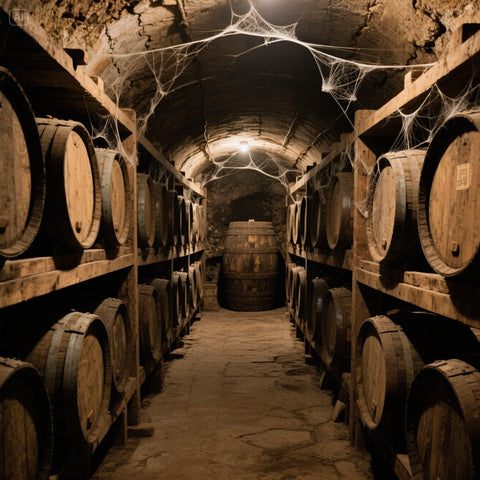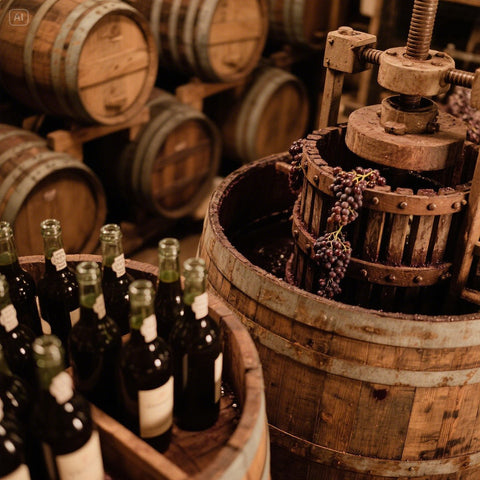Merlot, a grape variety celebrated for its soft tannins, luscious fruit, and approachable character, enjoys immense popularity worldwide. Often forming the backbone of Bordeaux blends or shining as a single varietal, Merlot's charm lies in its versatility and smooth texture.
However, like all wines, its ageing potential varies significantly depending on its quality, vintage, and crucially, how it is stored. Understanding how long a bottle of Merlot can be cellared before uncorking is key to experiencing it at its peak, a journey that involves careful consideration of optimal storage conditions, effective storage methods, insights into recent noteworthy Australian vintages, and common pitfalls to rigorously avoid.
The Maturation of Merlot: A Gentle Evolution in the Bottle
When a bottle of Merlot is laid down to age, a subtle yet profound transformation occurs, enhancing its complexity and softening its structure.
-
Primary to Tertiary Aromas: Young Merlot is typically characterised by vibrant primary fruit flavours such as plum, black cherry, and sometimes herbal notes. With bottle age, these fresh fruit characters gradually evolve into more nuanced tertiary aromas. These can include savoury notes of cedar, tobacco, leather, forest floor, and dried fruits, adding layers of complexity.
-
Tannin Integration: Merlot is generally known for its softer, more approachable tannins compared to grapes like Cabernet Sauvignon. During ageing, these tannins polymerise, becoming even silkier and more integrated into the wine's fabric, contributing to a smoother, more refined mouthfeel.
-
Colour Progression: The deep ruby-red hue of young Merlot will slowly shift towards a more brick-red or tawny colour as the wine matures, a natural indication of its evolution.
-
Enhanced Balance and Harmony: Ageing allows the various components of the wine—fruit, acidity, tannin, and alcohol—to intermingle and mellow, resulting in a more harmonious and elegant drinking experience. The wine becomes less about individual components and more about a seamless whole.
-
Ageing Potential Spectrum: It's important to note that not all Merlot is destined for extended cellaring.
-
Everyday Merlot: Many affordable, high-volume Merlots are crafted for immediate consumption, designed to be enjoyed young and fresh, typically within 2-3 years of bottling.
-
Premium Merlot: Higher-quality Merlots, particularly those with good concentration, balanced acidity, and some oak influence, can age gracefully for 5-10 years, sometimes even longer for exceptional vintages from reputable producers.
Optimal Storage Conditions: The Pillars of Preservation
To allow Merlot to age gracefully and develop its full potential, consistent and appropriate storage conditions are paramount. Any deviation from these ideals can prematurely age or spoil the wine.
-
Temperature Consistency: This is arguably the most critical factor. The ideal range for long-term wine storage is between 12°C and 15°C (54-59°F). Crucially, consistency is more important than hitting an exact temperature; wide or rapid fluctuations can cause the wine to expand and contract, potentially compromising the cork seal and allowing air to seep in, leading to premature oxidation. Temperatures consistently above 18°C (64°F) will accelerate ageing, potentially "cooking" the wine and resulting in dull, stewed flavours.
-
Humidity Control: A relative humidity level between 50% and 80% is generally ideal. Too low humidity can dry out corks, causing them to shrink and allowing unwanted oxygen ingress. Conversely, excessively high humidity, while less detrimental to the wine itself if the seal is good, can promote mould growth on labels and corks.
-
Light Exclusion: Wine should always be stored in darkness, away from direct sunlight and strong artificial light. Ultraviolet (UV) rays can trigger adverse chemical reactions within the wine, leading to "light strike" and premature ageing. Dark-coloured bottles offer some protection, but complete darkness is best.
-
Vibration Minimisation: Constant vibrations, whether from appliances, foot traffic, or nearby roads, can disturb the delicate chemical processes occurring during ageing and prevent sediments from settling naturally. Store wine in a stable, undisturbed location.
-
Bottle Orientation: Cork-sealed bottles should always be stored horizontally. This ensures the wine remains in contact with the cork, keeping it moist and expanded, thereby maintaining a tight seal against oxidation. Screw-cap bottles, however, can be stored vertically without any adverse effects.
Types of Storage Methods: From Purpose-Built to Practical Solutions
The choice of wine storage method depends on the size of your collection, your budget, and the desired longevity of the wines.
-
Dedicated Wine Cellars: The gold standard for serious collectors, offering naturally consistent temperature, high humidity, darkness, and minimal vibration. These can be existing basements, purpose-built underground cellars, or sophisticated climate-controlled rooms.
-
Wine Refrigerators/Cabinets: These freestanding or built-in units are specifically designed to replicate cellar conditions, providing precise temperature and often humidity control. They come in various sizes, from small countertop models to large units holding hundreds of bottles, making them excellent for medium to long-term storage for enthusiasts without a natural cellar.
-
Passive Storage Areas: For shorter-term storage (up to 2-3 years for many Merlots), a cool, dark, and stable cupboard, pantry, or closet that remains consistently below 18°C and away from heat sources can suffice. Avoid areas like kitchens, laundries, attics, or garages where temperatures fluctuate widely.
-
Off-site Wine Storage Facilities: For large collections or those seeking optimal conditions without home installation, professional, climate-controlled wine storage lockers or rooms are available for rent in many urban areas.
Best Recent Australian Vintages for Merlot: Investing in Longevity
While Merlot's reputation for ageing isn't as pronounced as Shiraz or Cabernet Sauvignon, premium Australian Merlots from strong vintages can age beautifully, developing elegance and complexity. Recent outstanding vintages for cellaring Australian Merlot (particularly from regions like Margaret River, Coonawarra, and parts of Victoria) include:
-
2021: Widely regarded as an exceptional vintage across many Australian wine regions, producing wines of great balance, concentration, and finesse, including Merlots with excellent ageing potential.
-
2018: A very strong vintage that yielded ripe, well-structured wines. Merlots from this year often have good depth and concentration for mid-term cellaring.
-
2016: Generally considered an excellent vintage across much of South Australia and parts of Western Australia, producing balanced wines with good fruit and structure.
-
2023 & 2022: Early indications suggest these are also very good to excellent vintages across several regions, potentially offering future age-worthy Merlots.
It is always advisable to consult specific vintage reports from reputable wine critics for particular regions and producers, as microclimates and winemaking styles can lead to significant variations within a general vintage quality.
Things to Avoid: Common Pitfalls in Wine Storage
Even a seemingly minor oversight in wine storage can quickly diminish a Merlot's quality and shorten its lifespan.
-
Excessive Heat: Any prolonged exposure to temperatures above 24°C (75°F) will "cook" the wine, resulting in flat, stewed, or oxidised flavours, often referred to as "maderised."
-
Frequent Temperature Fluctuations: Rapid or drastic swings in temperature are highly detrimental. They cause the wine to expand and contract, which can compromise the cork's seal, allowing air to seep in and accelerate spoilage.
-
Direct Sunlight or Bright Light: UV light, from either natural sunlight or strong artificial sources, triggers undesirable chemical reactions in the wine, leading to "light strike" and a rapid degradation of flavour and aroma.
-
Low Humidity (for corks): If the air is too dry, particularly in rooms with air conditioning, corks can dry out and shrink. This breaks the hermetic seal, allowing oxygen to enter and oxidise the wine.
-
Vibration: Constant movement, from household appliances, nearby roads, or even excessive foot traffic, can disturb the delicate chemical processes of ageing and prevent sediments from settling, negatively impacting the wine's development.
-
Storing in a Regular Refrigerator Long-Term: A standard kitchen refrigerator is generally too cold (around 4°C/40°F) and too dry for long-term wine storage. Furthermore, the frequent opening and closing cause damaging temperature fluctuations.
Key Features:
-
Merlot evolves in bottle, developing complex tertiary aromas and smoother tannins.
-
Optimal storage requires consistent cool temperatures (12-15°C), controlled humidity (50-80%), darkness, and minimal vibration.
-
Storage options range from dedicated cellars and wine refrigerators to suitable passive home spaces.
-
Premium Australian Merlots from excellent recent vintages (e.g., 2021, 2018) offer good ageing potential.
-
Avoiding heat, light, excessive dryness, and vibration is crucial for wine preservation.
-
Not all Merlot is intended for long-term ageing; consider the producer's recommendations.
FAQ:
Q: How do I know if my Merlot is suitable for ageing?
A: Age-worthy Merlots typically have good fruit concentration, balanced acidity, and often some oak influence. Look for premium labels from reputable producers or consult vintage charts for specific regions.
Q: What happens if I store Merlot for too long?
A: If stored past its prime, Merlot can become flat, thin, lose its vibrant fruit character, and develop undesirable oxidised or vinegar-like notes.
Q: Can screw-cap Merlots age as well as those with corks?
A: Yes, screw caps are considered by many experts to provide a more consistent and reliable seal, allowing Merlots to age excellently without the risks associated with cork taint or cork drying out.
Q: What are common signs that an aged Merlot is ready to drink?
A: Signs include a brick-red or tawny hue, complex aromas beyond fresh fruit (such as leather, tobacco, or dried herbs), and a smooth, integrated feel on the palate with softened tannins.
Q: Does all Merlot benefit from extended cellaring?
A: No, most Merlots are crafted for immediate enjoyment, showcasing vibrant fruit. Only those with sufficient concentration, structure, and balance from quality vintages will improve with long-term bottle age.




Comments (0)
There are no comments for this article. Be the first one to leave a message!